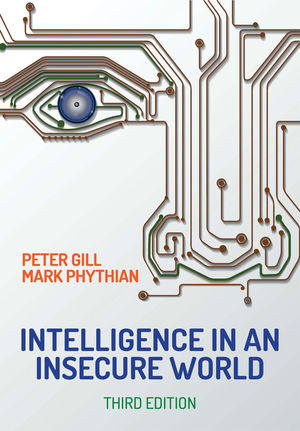Mass Notification Has More Choices Than Ever Before
Technology advancements, customer demand and regulations combine to give integrators and end users more emergency communication choices than ever before.

Apps are an increasingly popular addition to two-way emergency communication, allowing registered users to both report emergencies and receive information about incidents. PHOTO COURTESY OF RAVE MOBILE SAFETY

Fire systems, which often have in-building emergency notification systems, are increasingly being tied in or integrated with external mass notification systems, software or apps for wider and/or more targeted messaging capabilities. PHOTO COURTESY OF SILENT KNIGHT BY HONEYWELL

Mass notification systems can include everything from a stand-alone app to whole-building systems that rely on integration with a variety of different security and building automation systems. PHOTO COURTESY OF SIEMENS

Emergency stations such as this one are being used for more than just panic alerts now. This one incorporates video, and can be integrated into a larger mass notification system as a speaker. PHOTO COURTESY OF TALKAPHONE




Mass notification, or emergency communications, are two terms that are often used interchangeably; but are they truly the same thing?
“Mass notification and emergency communications can be two different things,” says Samuel Shanes, chairman and CEO, Talkaphone, Niles, Ill. “Emergency communications on a campus is ‘I have a problem and I want to communicate with authorities and tell them I need help.’ It is from the end point into the security force. Mass notification is the other side. ‘Security knows something I don’t and I need to know right away so I can take appropriate action.’”
Increasingly, he says, those are two sides of the same system — especially as facilities realize the benefits of both sending and receiving notifications from people who may be in a better position to actually see what is going on.
“People have always thought of mass notification and emergency communications as outbound, but there is a growing realization that it is two-way,” says Todd Piett, chief product officer, Rave Mobile Safety, Framingham, Mass. “There are people out there who might be the best eyes on the scene, and how do you get that information to all the folks that might help in the response?”
This is why Mark Indgjer, product marketing manager, Silent Knight by Honeywell, Golden Valley, Minn., says the latest trends include even more of the directed concept of distributed recipient mass notification systems (DRMNS). These systems target communication to specific individuals who may or may not be in the building, on the campus or even in the same city or state, but need to know and be involved in making decisions for the campus or themselves.
“Emergency and mass notification capabilities are continuing to expand, leveraging the ever-increasing technological capabilities that are available to us in our everyday lives,” says Ben Brewer, senior director, professional and client services/CISO, Alertus Technologies, Beltsville, Md.
Mobile apps have become the norm in many parts of security, and are now also being used in emergency notification. They are just one part of the potential for these systems, however, says Marla Moran, commercialization and product marketing manager for Eaton, Cleveland, Ohio. She refers to the “three key ‘I’s’ of mass notification: The Internet of Things, interoperability and intelligibility as the biggest drivers today.
“The IoT trend will aid organizations in integrating different technologies,” Moran says. “Anything that can be connected will be. Interoperability is also a key technology trend that impacts the design and implementation of an effective MNS [mass notification system]. Many systems are now leveraging the power of reaching existing computer networks and the Internet for traditional MNS elements, such as outdoor giant voice or indoor voice evacuation systems. Due to today’s complex and sophisticated threats there has also been an increasing trend for MNS systems to provide clear, concise and intelligible voice messages that communicate how people should respond in an emergency.”
All of these developments provide both opportunity and challenges for the integrator, says David Baeder, manager of mass notification center of excellence, Siemens Building Technologies, Buffalo Grove, Ill. While there are many more facilities looking for this technology there are also a proliferation of choices in the marketplace, from individual apps and software all the way up to full “smart building” capabilities and everything in between. Add to that the systems already in place and things can get tricky.
“The large campuses or conglomerate of buildings that make up a campus have a variety of different systems implemented over time,” Baeder says. “Often these are aging and/or don’t talk to each other. The need for centralized command and control of those systems has been a big push. Integration has become a major emphasis for the directors managing these large campuses.”
TECHNOLOGY INNOVATIONS
There has been a renaissance in the area of mass communication technologies in recent years. From apps to signage, improvements in voice and speaker technologies and location awareness, there is much more that can be done to inform and receive emergency information than ever before.
“What we are seeing is a search for the open platform,” Shanes says. “Own software WEBS Plus can call people’s phones and send messages as well as call out to our towers and phones and other devices. It is an integrated package.” Talkaphone works with other systems, including Rave, to create what Shanes calls a “force multiplier” of technologies.
Rave’s system allows users to register their cellphones and call in notifications to the system to then be pushed out to the selected audience. “Say in a K-12 environment, if someone pushes a button, the system will send a notification, for example, to all teachers or administrators.”
The Web-based platform from EMERgency24, Des Plaines, Ill., also allows for this type of two-way communication, as well as integration. “The platform we have created provides two-way communication with a multi-media component,” says Kevin Lehan, manager of public relations. “People can send pictures and images to and from. Because it’s Web-based we can integrate a camera system.”
Fire systems have always incorporated notification; as technology moved beyond bells and sounders to speech, these systems are increasingly a part of a larger mass notification system, utilizing what is already in the building for other types of messaging, as well.
“We have an EC/MN system that is more within the building but we do incorporate and work with third-party vendors where we can to activate these kinds of systems,” Indgjer says. This might involve a contact closure or some kind of message to activate a mass email or wider area notification, he explains. “We have fire, voice evacuation and emergency communications, plus the flexibility to communicate to third-party systems.”
New technology is the core engine, Baeder says. “There are different levels of maturity in the marketplace. There are those that just have basic communications and maybe even just audible fire notification without intelligence, all the way up to digitization and total building automation.
“For many years Siemens has been investing heavily in total building solutions. Our inputs are not just fire or NOAA, but could be building automation or power management. We can talk to the fire speaker or the P.A., but may also only talk to maintenance about a particular room that is not the right temperature. We may be able to leverage the fire speakers to announce simple campus activities, from meetings or sports events, which are all pushed out through the platform.”
Automation is a key factor for many applications, says Christopher McNicholas, vice president sales, Digital Acoustics, Lake Bluff, Ill. “The ability to eliminate human errors and possibly reduce headcount keeps organizations running smoothly and more cost efficiently. Installing a system that acts on a scheduled event or trigger gives administrators and department heads the assurance that emergency events and situations will be addressed in real time.” Digital Acoustics’ TalkMaster Focus Automation software allows users to launch pre-recorded audio messages via contact closure or sensor break. It also includes built-in text-to-speech capabilities allowing for spoken voice reading/paging of RSS feeds, SMS/email, NOAA alerts and more.
Bruce Czerwinski, U.S. general sales manager, Aiphone Corp., Redmond, Wash., says Power over Ethernet has also helped revolutionize emergency communications. “This allows for mass communications networks and cables to be run to the closest building instead of running POTS lines back to a telco closet. It also allows the network to integrate with other campus-based apps such as those using geo-locating technology. If a call for help is created by that app, a dispatcher can bring up those locations to see, hear and communicate.”
Over and over again, integration is the key to many manufacturers’ latest developments, from fire systems that easily integrate with other mass notification products, to the other way around. “Alertus has a robust set of APIs supporting logical integration with third-party systems,” Brewer says. These include fire systems, data feeds, VoIP phones, digital signage, and more.
But not all users are looking for complex, fully integrated systems, says Scott Stogel, vice president of engineering, TextSpeak Products Group, Westport, Conn. The company’s EarBridge text-to-speech announcement system won Judge’s Choice at ISC West last April. “We already had a text-to-speech amplifier that takes incoming data and speaks it with a human voice,” Stogel says. “We thought if all these SMS messages were going out, why not put all these end points to speak them.” The company’s latest product is an out-of-the-box NOTIFY! System designed to be a cost-effective solution that can be installed by the user, or incorporated into a larger system by an integrator.
Cost can be an issue, depending on how involved the system is, says Michael Troiano, president and CEO, Advanced Fire Systems Inc., Hopkinton, Mass. “While fire systems are mandated, MNS seems to be viewed as an enhanced, more expensive security system.”
Ultimately all of these different systems can and should be a part of a “layered” approach, Baeder says. “You have inside the building where you are talking to those visual and audible devices. Then you have outside the building where you are talking to a typical loudspeaker or siren event. And there are personal devices like cell phones. All three are needed to create an umbrella of true coverage, which is critical to making sure the right message gets to the right place at the right time.”
THE INTEGRATOR’S ROLE
With all of the options and technologies out there it can be difficult for integrators to know exactly which system will benefit their customer the most. It comes down to a combination of the traditional consultatory sale and choosing a product that will work well.
“The design of a mass notification system should be specific to the facility and type of emergencies that occur at that facility; align with the organization’s emergency response plan; be scalable so that the organization can expand in phases or enterprise-wide; utilize the right technology from a reputable supplier; leverage existing equipment; and have the capability to integrate with existing equipment,” Moran says.
Bret Holbrook, product manager, STANLEY Security, Indianapolis, agrees, especially about the last point. “When talking to end users, the desire to have mass notification continues to increase; the challenge is having mass notification systems tie into existing solutions that the end user has,” he says.
Users don’t want to rip out what they have already installed and have to start all over again, Troiano adds. “What they want is a solution that takes advantage of what they already have by adding new equipment in stages over time to improve the overall solution.”
To facilitate that, many manufacturers incorporate open protocols, such as the common alerting protocol, or CAP. “A lot of hosted and on-prem emergency notification systems use CAP,” Piett says. Originating from FEMA as a common way for all the emergency notification systems to speak to one another, the protocol is now common in schools and campuses, enterprise locations and more.
Integrators now have the capability to move emergency communication even farther than it was originally designed for, Piett says. For example “A county in New York just went through an integrator to purchase Rave panic buttons for all its critical infrastructures,” he says. “On a venue-by-venue basis they are integrating with door locks and camera systems so that when an incident occurs at one of these venues and someone presses the active shooter button they are automatically sharing video and giving responders the ability to open or lock doors remotely. That is a very attractive prospect for the integrator. We have the app and they apply the logic.”
The EMERgency24 system can be used on a daily basis for regular communications as well as emergencies, and also offers integrators RMR potential. “This could be one of the most profitable services an integrator could offer,” Lehan says. “We are now monetizing the building population. We charge based on the number of contacts in the list so now we are monetizing every person on that contact list on an annual or monthly basis.”
Baeder says the integrator opportunities will be even more significant going forward. “There is so much change from a solutions standpoint from mobile to cloud to premise-based. Campus administrators are very interested in learning about those. Integrators should spend increased amounts of time trying to understand how these systems can all work together.”
What’s more, they need to spend time truly understanding not only how they can work together, but specifically how the customer wants them to do that. Emergency communications vary greatly in terms of protocol, and the integrator has a real chance to distinguish themselves in that consultant role, Shanes says.
Indgjer recommends performing a risk analysis with the client, involving everyone in all the possible scenarios to be aware of how that could affect personal safety or property protection. “Here is the event. How should they respond and take action on that event, and help them determine what they might need? That allows the integrator to sell the right components that give them the optimal response to an action.”
The Business Case for Mass Notification
Life safety and emergency situations are top of mind for any facility looking at mass notification and emergency communication systems, and often news events drive purchasing. However, increasingly, there are other business scenarios where this technology can show even more return on investment. It all comes down to getting the right message to the right people at the right time, says Todd Piett of Rave Mobile Safety.
“It’s not just about active shooters, but about how quickly you can recover from an incident,” he says. “Recently a large corporate customer had a fire at one of their factories. Trucks from all over the country were going to that factory.” Using the app, the facility was able to quickly re-route those trucks to a different facility. “That represents hard dollars for every 10 miles that truck goes in the wrong direction,” he says.
Business continuity is a benefit Mark Indgjer of Silent Knight by Honeywell has seen as well. From data centers to banking, preventing downtime is critical. “They can’t afford any downtime or risk so they have to maintain operation. They are starting to recognize that anybody can benefit from this [type of communication], even small businesses.”
Digital Acoustics’ Christopher McNicholas has even seen mass notification systems used as crime deterrence. “Critical infrastructure sites, with a need to protect expensive equipment across wide areas, are seeing the benefits of using IP/network-based paging and mass notification. Not only is it useful for informing employees and contractors onsite, but also for deterrence. For example, our solution can be tied into camera and perimeter detection systems to play an automated warning message should an intruder enter the premises.”
What to Look for in an Effective Mass Notification System
With so many choices, what are some of the key features and functions security integrators should look for in a good mass notification system?
“The most important elements sound simple but are hard to do,” says Todd Piett, Rave Mobile Safety. They are reliability, 24/7 and ease of use. These are systems that might go unused for months, but when you need it, it has to be up and running fast. The other one is integration. You don’t want silos. When there is an emergency you want to have all these things set up and one communication goes across all areas.”
Mass notification needs to be simple to use, agrees Bret Holbrook of STANLEY. “Many events happen incredibly quickly, and if the mass notification cannot be efficiently activated, that is a problem for the end user.”
There are a lot of vendors that offer emergency communication systems and size doesn’t necessarily matter, but it is important to be careful about reputation and longevity, especially in a fast-growing space like this.
“Just Google the words ‘mass notification’ and you will find 30 to 50 entries,” says Sam Shanes of Talkaphone. “Not all of them will be there next year, and not all were there last year. That is really key for the integrator. Make sure it is a manufacturer that will be there for them. This is a very exciting field, but it is not always easy to do. They should be careful that they are dealing with a reliable manufacturer.”
Digital Acoustics’ Christopher McNicholas suggests making sure that both intelligibility and redundancy are part of the package. “Audio components must be reliable and provide high definition, clear voice quality. And in the age of network-based systems, if a system is down or you lose a server, being exposed without coverage can also be detrimental to your emergency notification system.” He adds that open protocols such as SIP or CAP are another important thing to look for.
Caroline Kilday, senior marketing manager, Alertus, cautions integrators not to rely too heavily on app-only devices. “I see that many mass notification providers are offering mobile apps as the core solution, or sometimes the only solution of their mass notification offering. We believe mobile apps should be just one aspect of an organization’s multi-layered mass notification strategy because cellular systems can become overburdened and fail during major emergencies.”
Aiphone’s Bruce Czerwinski agrees. “Apps will continue to play a bigger role in mass notification plans. But relying too heavily on them could leave a hole in the system.”
A recent Eaton voice-of-the-customer survey backs up much of what others have to say. “The survey revealed that the most important elements of an effective mass notification system are reliability, ease-of-use, and interoperability,” says Marla Moran. In an actual emergency, customers want a solution that is not only reliable but easy to use, with a single interface to launch critical emergency messages across the different layers of mass notification as well as other systems, so security professionals and emergency managers can focus on the emergency at hand instead of trying to activate all of the disparate systems.”
By the Code
Mass notification is not currently required by code, except in certain military installations. However, there are codes and laws that may impact where and how it is used both now and in the future.
“One of the biggest advancements in fire now is the idea that [NFPA] code now allows for priorities that we control at our end,” says Mark Indgjer of Silent Knight by Honeywell. “Maybe you have a fire alarm situation but at the same time there is an emergency situation where you need to override that fire message due to a higher priority.”
NFPA Code 72 is one of several codes and laws that touch on emergency communications. The Unified Facilities Criteria (UFC), OSHA, and the Cleary Act may also have some applicability depending on the scope of the system, says Ben Brewer of Alertus.
“The only current requirements for mass notification systems are in the DOD’s UFC 04-021-01-Design and O&M: Mass Notification Systems,” adds Eaton’s Marla Moran. “Certain vertical markets such as higher education have local and state requirements, as well as the Higher Education Opportunity Act that mandates institutions of higher education immediately notify the campus in the event of an emergency. Although the NFPA does not require that a mass notification system be installed in a building, it does provide guidance in Chapter 24 of NFPA 72 on how to install a MNS. Currently proposals are in the process to add requirements in NFPA 101, the International Facilities Code (IFC) and International Building Code (IBC) for colleges and universities to conduct a risk analysis in order to assess its need for MNS. However, building codes now require voice communications in K-12 buildings, assembly occupancies of greater than 1,000 people and high rise buildings.”
MORE ONLINE
For more on mass notification and emergency communication visit SDM’s website, where you’ll find the following articles:
“Emergency Communications: Beyond the Blue Box”
www.SDMmag.com/beyond-the-blue-box
“State of the Market: Fire Alarms”
www.SDMmag.com/state-of-the-market-fire-alarms
“A Conversation With NFPA”
www.SDMmag.com/a-conversation-with-nfpa
“4 Key Trends in Emergency Communications”
www.SDMmag.com/key-trends-in-emergency-communications
“Delaware College Boosts Life Safety With Emergency Communication”
www.SDMmag.com/college-boosts-life-safety-with-emergency-communication
Looking for a reprint of this article?
From high-res PDFs to custom plaques, order your copy today!













